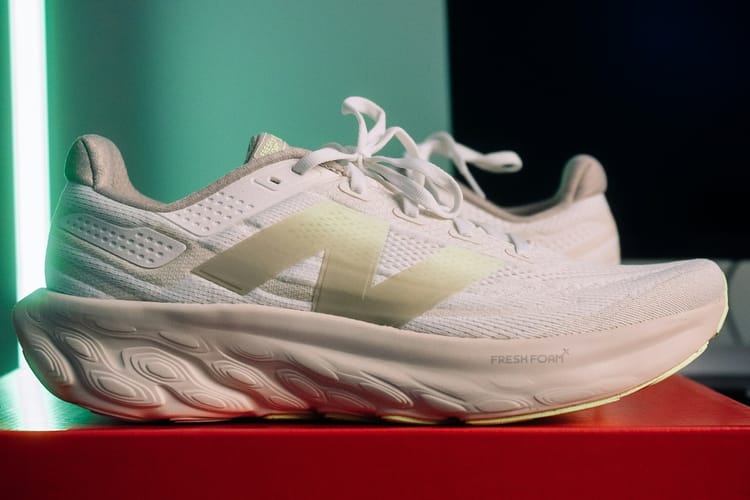How to eliminate knee pain fast.

All runners experience some form of knee pain
Knee pain is like a rite of passage as a runner. We've all had knee pain in the past. Hell you probably have knee pain running right now.
In today's newsletter, I am going to share with you a guide on how to address your knee pain the right away, so you can get back to running quickly.
Make sure your knee pain is not this
First off, I want to help you understand that knee pain could be other problems that do not respond well to just changing your training paraments and doing the right exercises.
If you have any doubt as to what your knee pain is and you are not comfortable doing your own rehab, make life simple for yourself and go see a professional.
If your knee has trouble bending or straightening, then this guide is not for you.
If your knee has been swelling persistently, or has looked swollen with redness/warmth, this this guide is not for you.
If you have a bone sticking out of your skin, then this guide is not for you. Goodness please go to the emergency room!
Okay, this guide is only for knee pain that you feel in front of your knee when your run, go up and/or down stairs, or even pain with walking.
This condition typically presents with anterior (front of the knee) knee pain at or around the patella (knee cap).
For the rest of this guide, I'll refer to patellofemoral pain syndrome as PFPS.
Get your quadriceps really, really, really strong.
I can't emphasize this enough - you need to get your quadriceps really really strong.
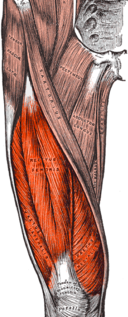
Really really strong.
Think of the patella as being the middle of a tug a war. The two warring parties? The quadriceps and the glutes/iliotibial band (aka IT band). The glutes and IT band want to pull the patella laterally (to the outside). To equalize that pull the quadriceps helps pull the patella medially (to the inside). A draw on this game of tug a war keeps the patella centered at your knee. And when the patella is aligned properly, the joint surface underneath the patella is happy.
In addition to all that, strong quadriceps lead to a strong quadriceps tendon and patellar tendon. Both tendon sites are potential sites of pain.
Clinically, I've seen patients' pain decreased significantly with even a modest amount of strengthening exercises.
Here are my go to exercise to help with PFPS.
Wall sit holds
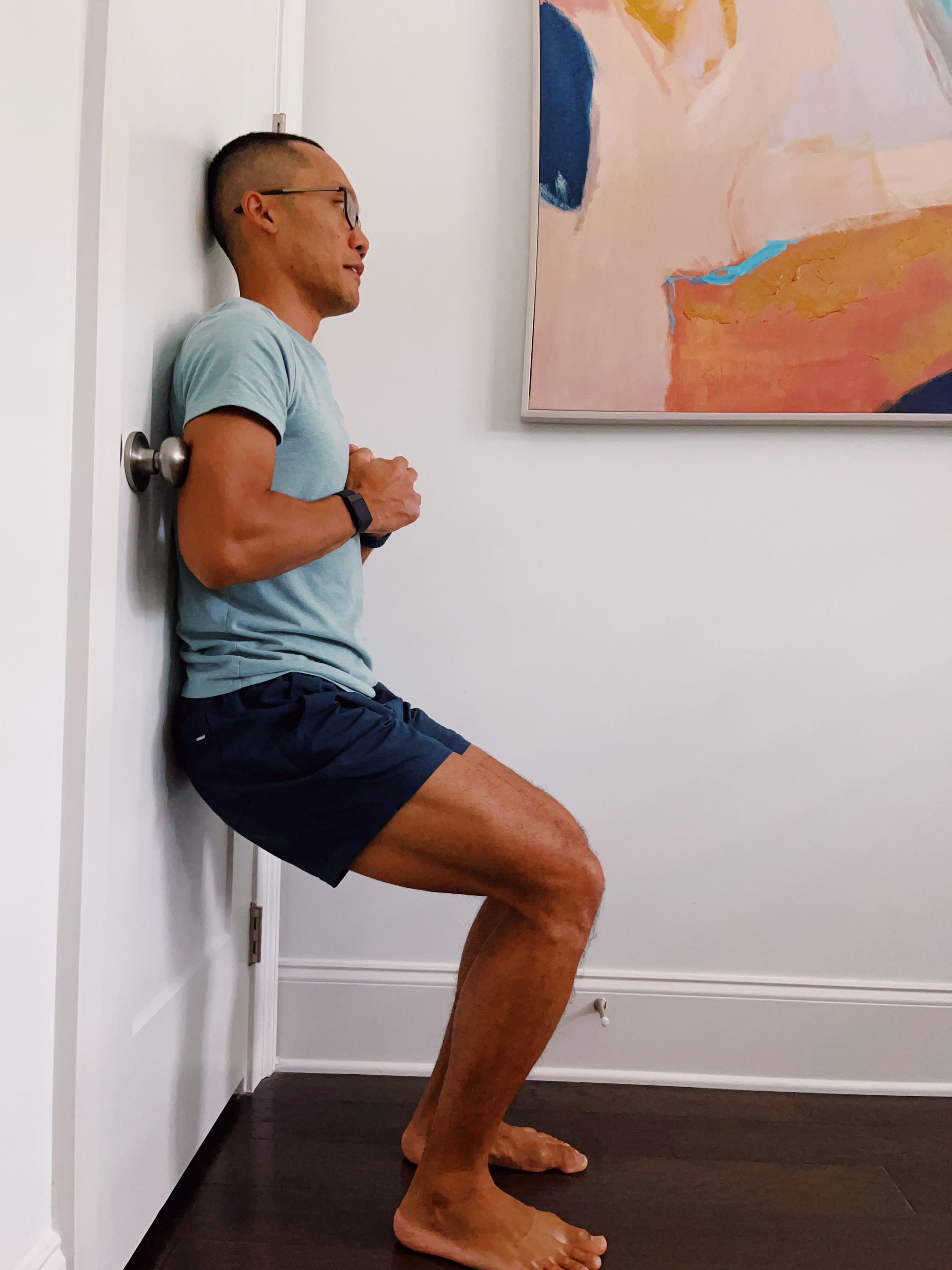
With your back against a wall and feet in front of you, slide down to about 90 degrees bend at the knee. Hold for 30 seconds. Keep constant pressure contact between your forefoot and the floor, yet keep your heels on the ground.
Wall squats
Similar to the wall sit but instead of holding at the bottom, you simply slide down and slide up. Perform 3 sets of 10 reps.
Forward knee drives on a step
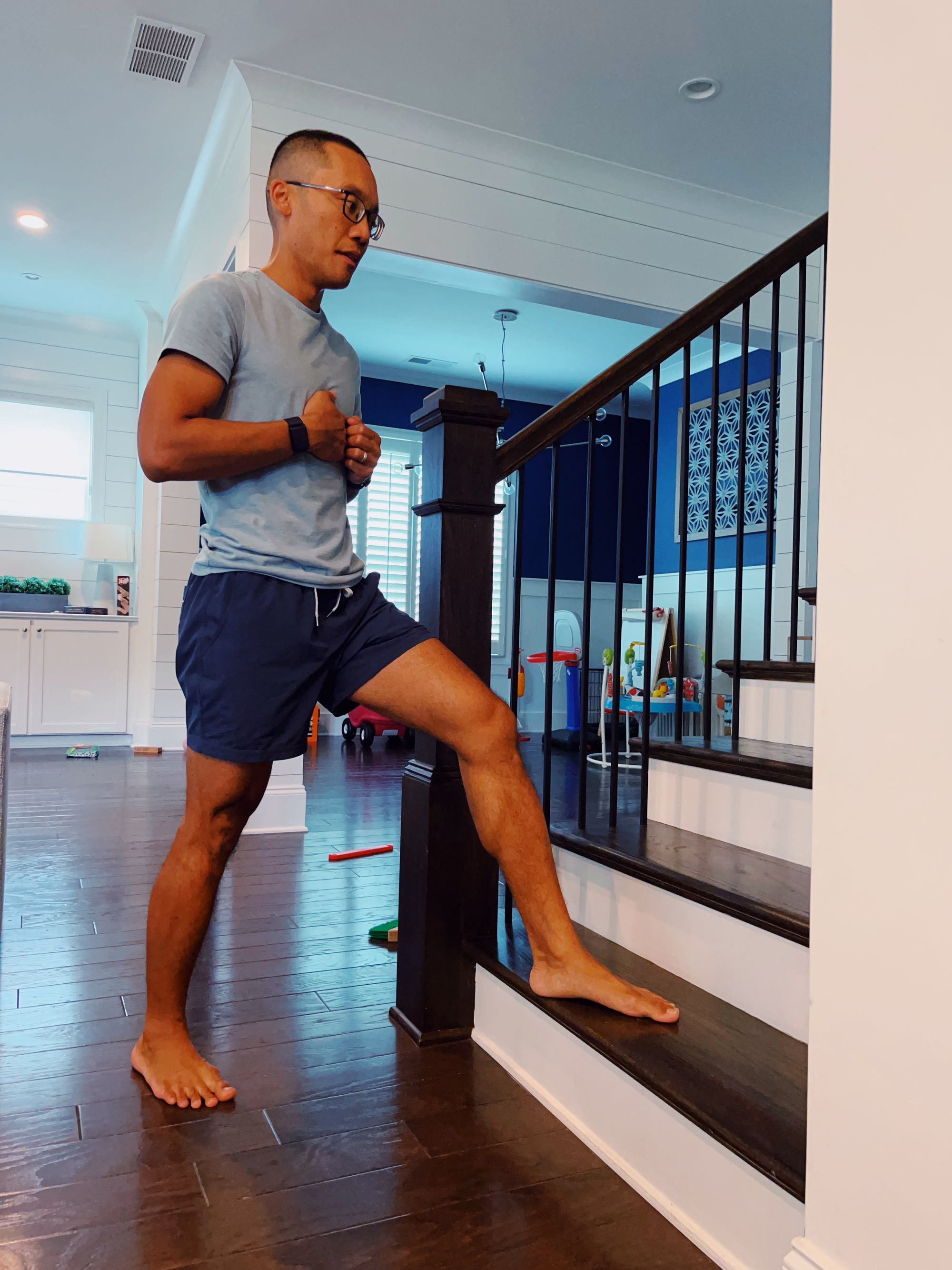
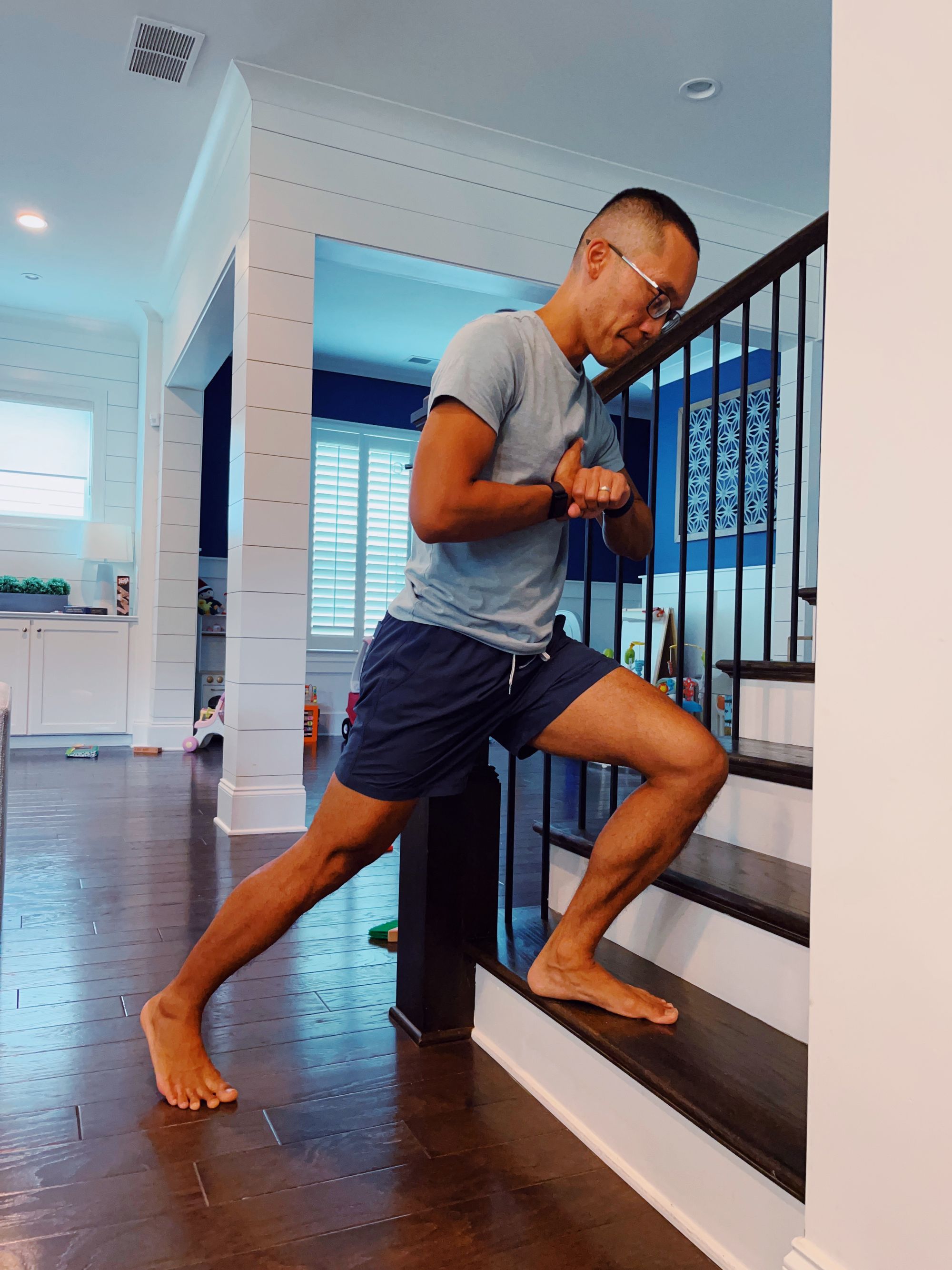
Place your foot on a step. Shift your weight forward, driving your knee to go forward past your toes. Pressure should be on your forefoot while keeping you front heel down. This will target your quadriceps. Perform 3 sets of 10 reps.
Planks
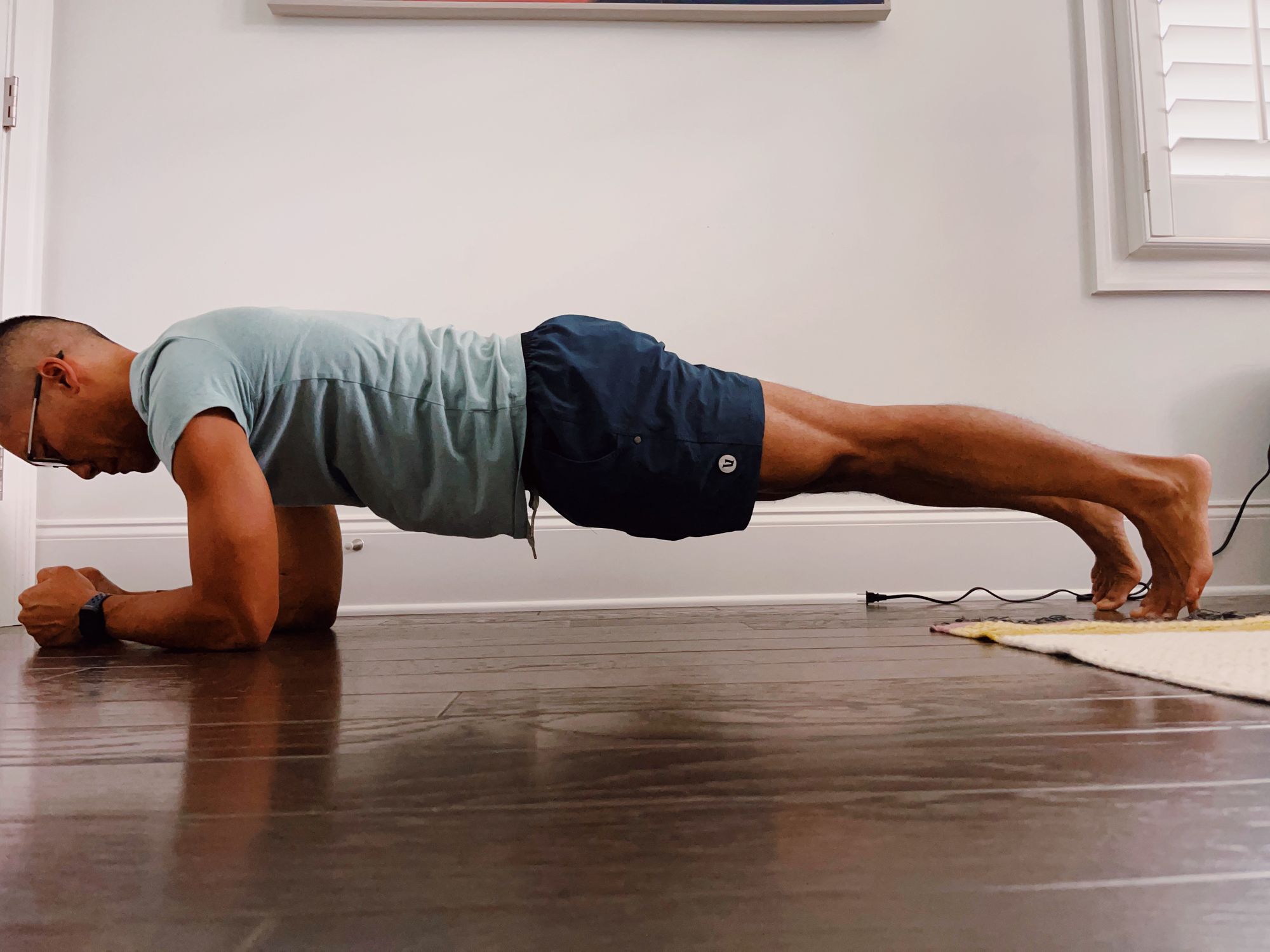
Often considered an exercise for your core, the plank can also target the quadriceps too. Set yourself up in a plank position and focus on locking out your knees straight to activate your quadriceps. Perform 3 reps, 30 seconds each.
Strengthening your hips next.
Next to quadriceps strength, the hip muscles deserves attention too.
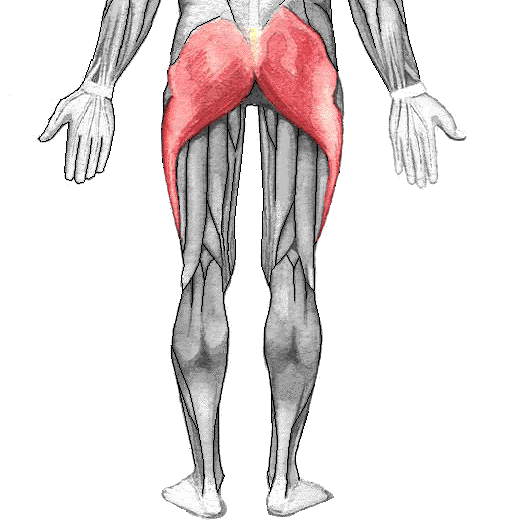
Without the strength and control from the hip muscles, the entire thigh and knee joint can rotate causing more issues at the patella. The knee commonly rotates inwards when there are weak hips and poor muscular control.
Here are my go-to exercise to target your hips
Hip Hinges
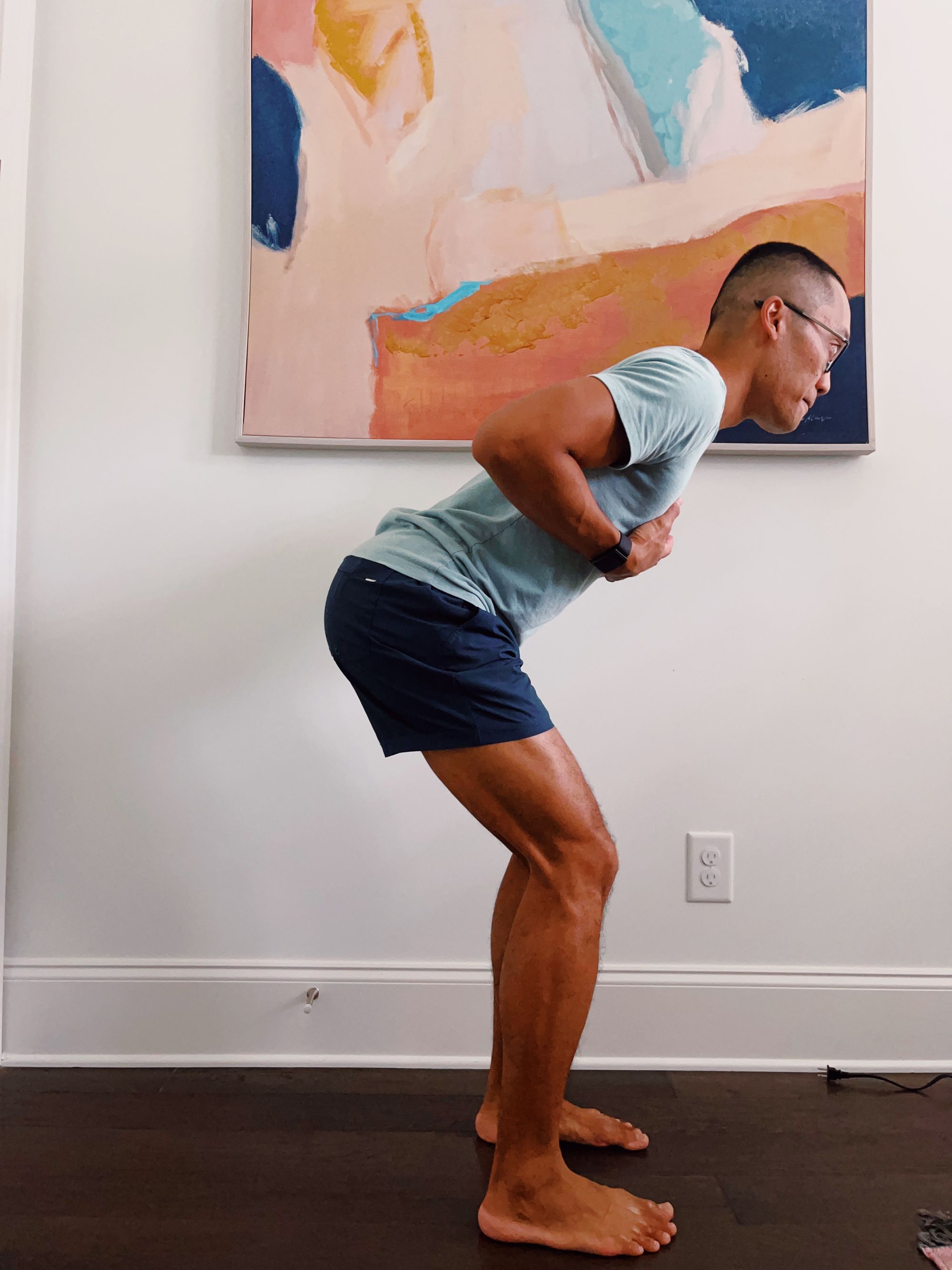
Have your knees slightly bend, then lean your upper body forward. You'll "hinge" at your hips, pushing your butt backwards as far as you can slowly. You'll feel this at your butt and hamstrings. Perform 3 sets of 10 reps.
Forward knee drive with trunk rotation
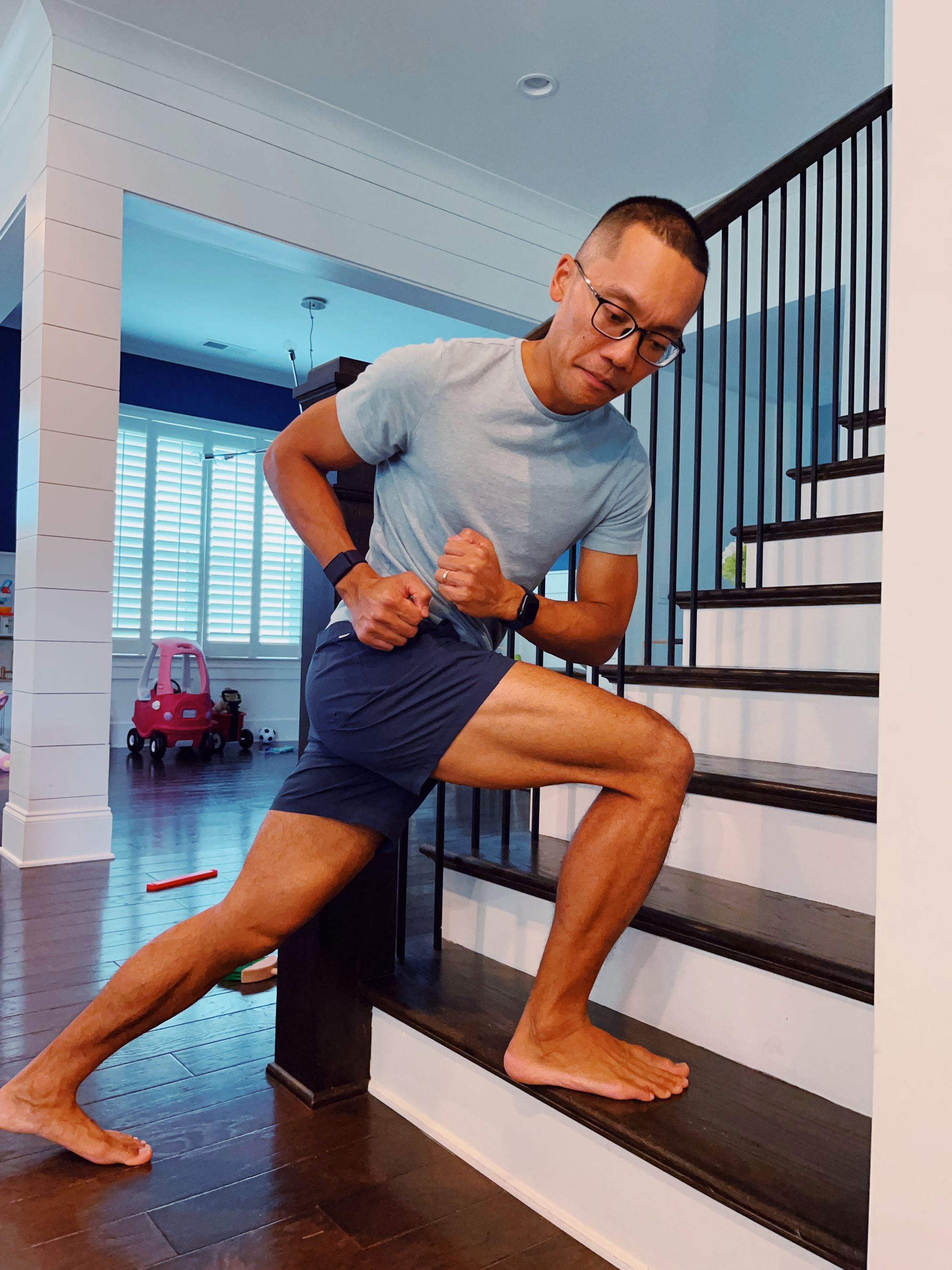
Similar to the forward knee drive to target the quadriceps, but for this exercise you turn your upper body to the same side as your forward leg (right upper body rotation if right foot is in front and vice versa). You'll feel this in your glutes as your rotate and drive forward. Perform 3 sets of 10 reps.
Bridges - Single leg or double leg
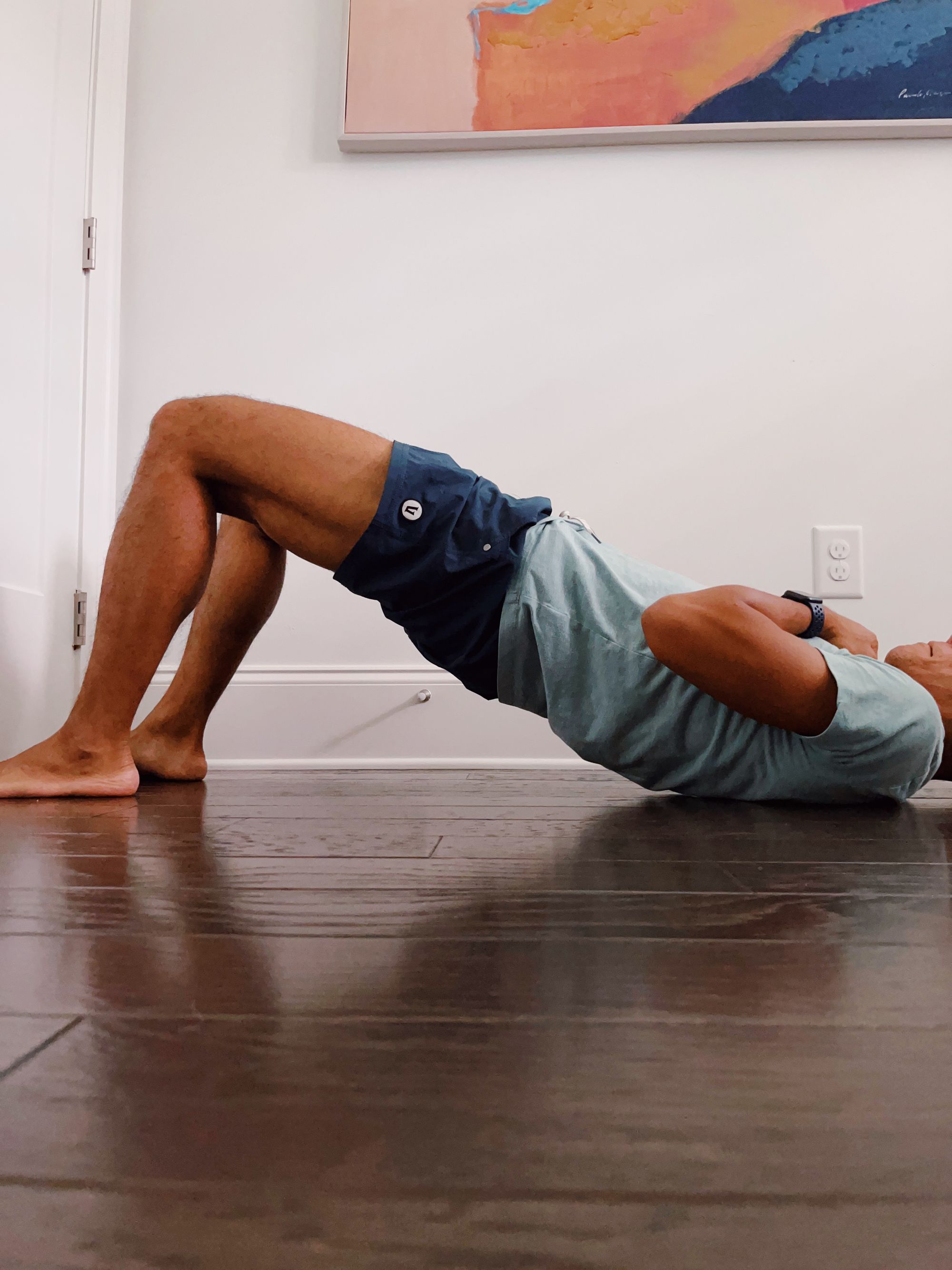
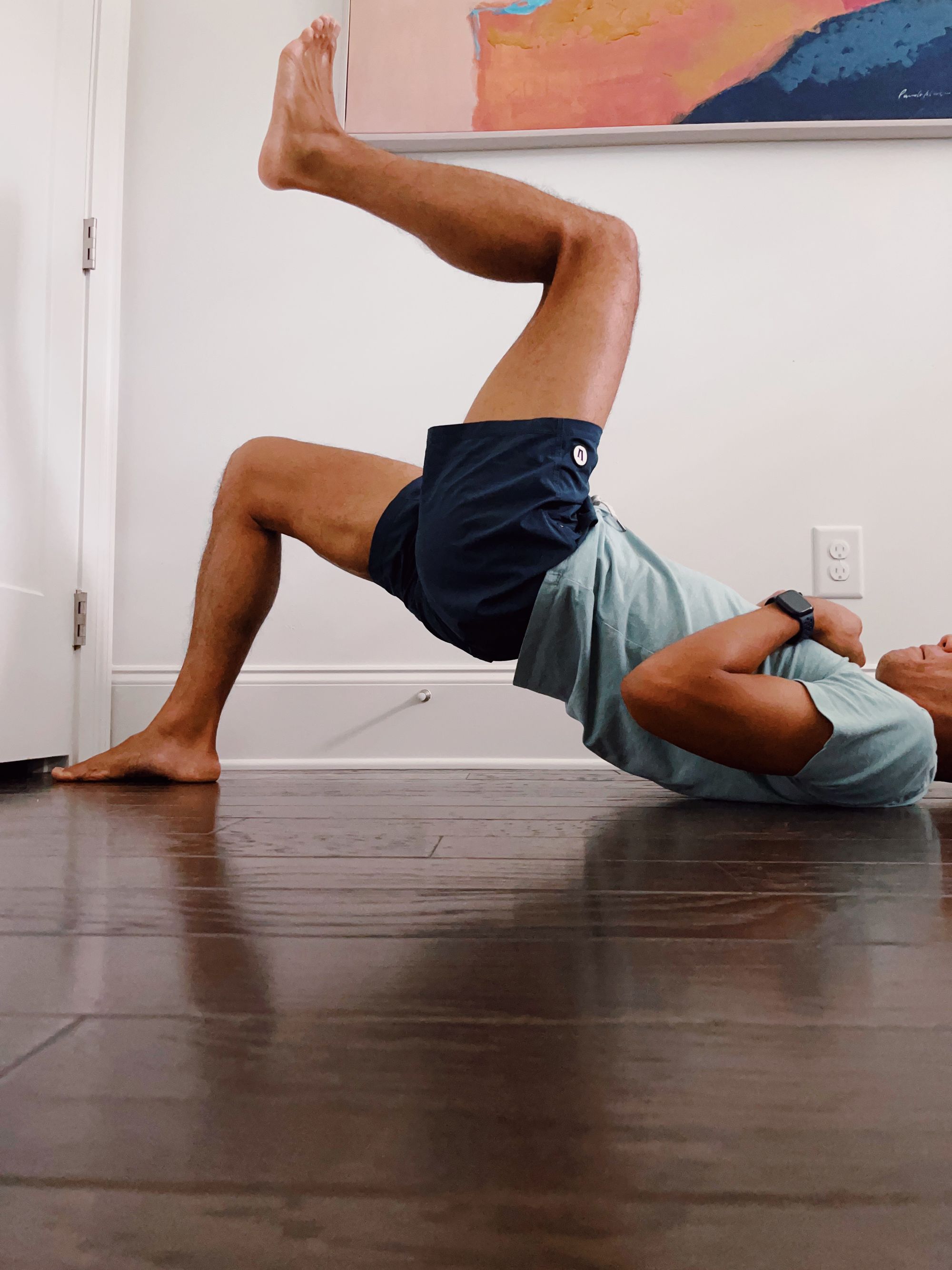
Start with lying on your back with your knees bent. Next bring your butt up towards the sky, squeezing your butt muscles at the top. The single leg option is to make the bridge more difficult. Perform 3 sets of 10 reps
Modify your running.
Changing how your run could also give your some knee relief.
A common running fault is overstriding, where your foot landing is too far forward from your center of gravity. The ideal landing position of your foot is just in front to just underneath your body.
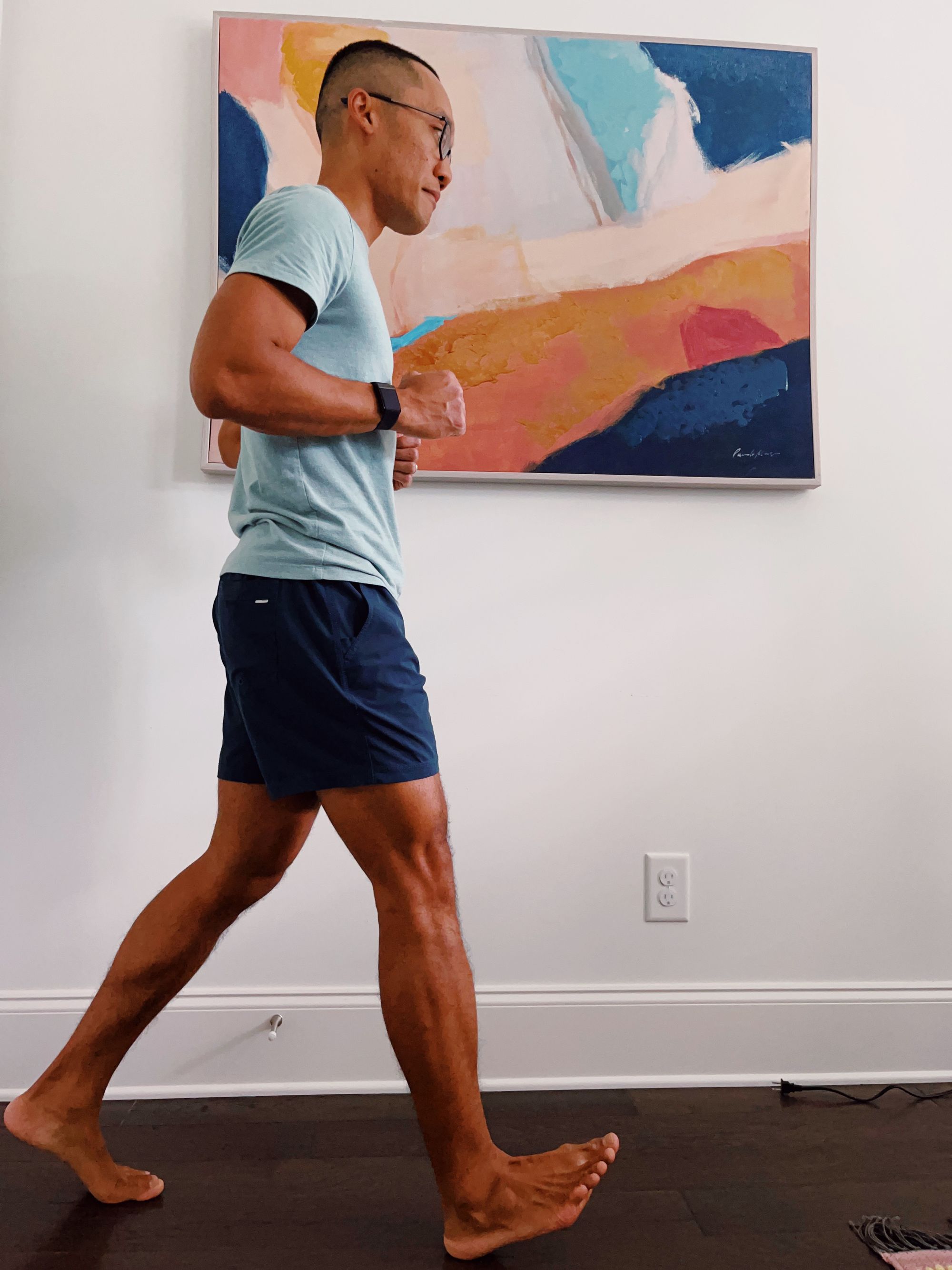
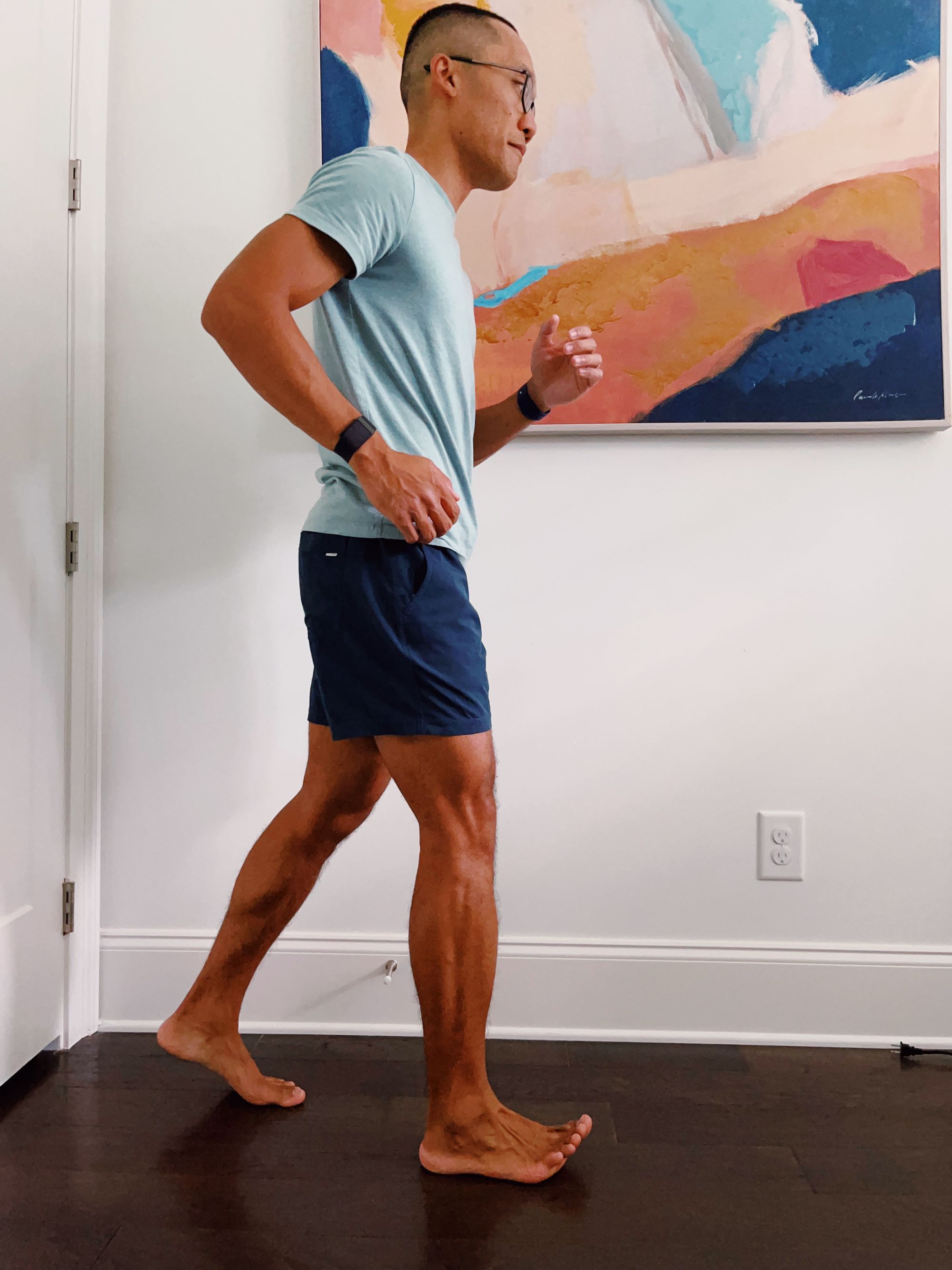
I like to keep changes simple. So the next time you run, think of making short quick steps when your run. You'll feel silly, but this is an easy way to decrease your stride length. And if you use a running watch, you may see your cadence rate rise. If you do, then you've made running change correctly.
Decreasing stride length helps decrease the force impact of every step landing. With the decreased force impact, then your PFPS pain could decrease.
If the pain does not decrease enough, then you'll need to take a break from running for a least a week. You can still get your cardio work in with a stationary bike. During this week break you can focus in on your strengthening exercises. After the week go out on a short test run to see how your knee holds up.
Add these exercises to your training routine, performing these 1-2 times a weeks. You may need to do these more frequently in the week if you're injured. This ensures adequate stimulus for the necessary positive adaptations to occur through your leg.
Feel free to forward this email and share with friends and family who may need this guide.
And if you have any questions, please don't hesitate to ask. Simply reply to this email.
Thank you for reading this week's Grit Run Club newsletter. Have an awesome week and happy running out there!
Ryan

